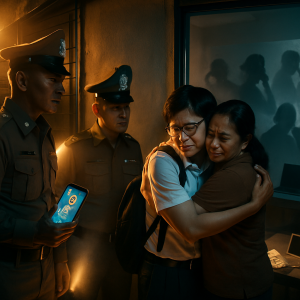Operations are steadily unfolding at the scene of the State Audit Office (SAO) building collapse in Bangkok’s bustling Chatuchak district this Tuesday. An image of titan cranes and tireless workers underscores the ceaseless efforts to sift through the wreckage. This catastrophic incident has not only commanded media attention but also sparked a swirl of inquiries enveloping the city’s specter of government contracts.
On this tense day, Kriengsak Kovadhana, who plays a key role as the executive vice president at Italian-Thai Development Plc (ITD), slipped into the Department of Special Investigation (DSI). His task? To shed light on the intricate web of construction contracts tied to the SAO building catastrophe. According to the shrewd Col Amorn Hongsrithong, head of the Bureau of Government Procurement Fraud, the discerning questions danced around bidding processes, the illuminating distribution of work, and the labyrinthine compensation agreements.
In an ensemble casting, ten engineers linked to this ill-fated construction endeavor received an invitation of gravity—they were beckoned for their signatures. Among the group, only a shy seven had the courage to respond with presence, leaving the DSI scribbling memos for another chat with the remaining three.
Within a fortress of over 100 boxes, investigators delved into documentation harvested from the SAO offices, each piece a potential piece of the puzzle. These weren’t ordinary papers—they chronicled the lifeline of construction, project supervision secrets, fiscal gymnastics, and the rhythm of daily toil.
This document symphony is scheduled for a grand review later in the week. Picture a convergence of minds—DSI sleuths, SAO dignitaries, and the probing Department of Public Works assembly, all united with representatives from the ambitious construction joint venture. Their goal remains to map out evidence, hoping to illuminate the shadows of alleged bid-rigging practices meticulously pursued by Col Amorn and his team.
Back at ground zero, the towering 30-storey SAO headquarters had crumbled spectacularly on March 28, giving way to tremors arising from a distant Myanmar earthquake. Amidst the eerie hush, it had been the solitary giant to fall in Bangkok, and its fall exacted a grim toll. The anguished cries of dozens trapped within resonated through the echoes of twisted steel.
Even so, the devoted retrieval teams press on. Suriyachai Rawiwan, the earnest director of the Disaster Prevention and Mitigation Office, offered a somber update. A discovery—one unscathed soul and five fragmented remains—occurred Monday night near a desolate stairwell in Zone B. His tally now stands at 64 souls brought forth from the rubble, yet hope lingers for 31 others.
As each new dawn casts hope over this wreckage, Mr. Suriyachai’s teams inch closer to unveiling the hidden levels of Zones A and D. Their current endeavors focus on Zones C2 and C3, believing that echoes of the past still hide beneath the debris.


















This sounds fishy to me! Bid-rigging is everywhere in government contracts.
Join the dots, folks. The pattern of corruption is clear if you only see it.
But where’s the proof? Not every mishap is corruption.
It’s not just about patterns. People have to face due process. Innocent until proven guilty.
Sure, but how often do we see real justice served? These things get buried quickly.
The real issue is why such an earthquake-prone area had such a tall, weak building.
Agreed, Larry! Urban planning in Bangkok needs a complete overhaul.
Easier said than done, the bureaucracy is maddening!
I don’t even know this was possible in a city like Bangkok. Aren’t there building codes?
There are codes, but enforcement isn’t consistent. It’s a systemic issue.
Awful tragedy. My condolences to the families of the victims.
It keeps happening! We need to hold people accountable for these disasters.
Exactly, accountability is key to preventing this!
It’s not just accountability, but a complete systemic change. Who’s going to challenge the status quo?
Kriengsak Kovadhana’s role seems like PR damage control rather than investigation.
Or maybe it’s a bit of both. Sometimes they overlap.
It’s clear they’re trying to maintain a facade. What actually happens in those boardrooms?
This story raises the question: how often do we ignore local expertise in favor of big contracts?
That’s a good point. Local expertise often sidestepped for profit-driven agendas.
Wasn’t this an avoidable tragedy? There should have been better measures in place.
Sounds like a lot was understated in the planning phase. What did they expect?
True, Mary. It’s all about cutting costs at the expense of safety.
This disaster could have been averted with better disaster preparedness and honesty!
These are literally life and death decisions being made for profit.
It’s sad, but often true. We have to demand transparency.
Do we really think anything will change after this?
Not if we don’t advocate for it. Public pressure can be powerful.
Change often starts with awareness, and awareness is building.
Just imagine the grief of those families. I hope they find some justice.